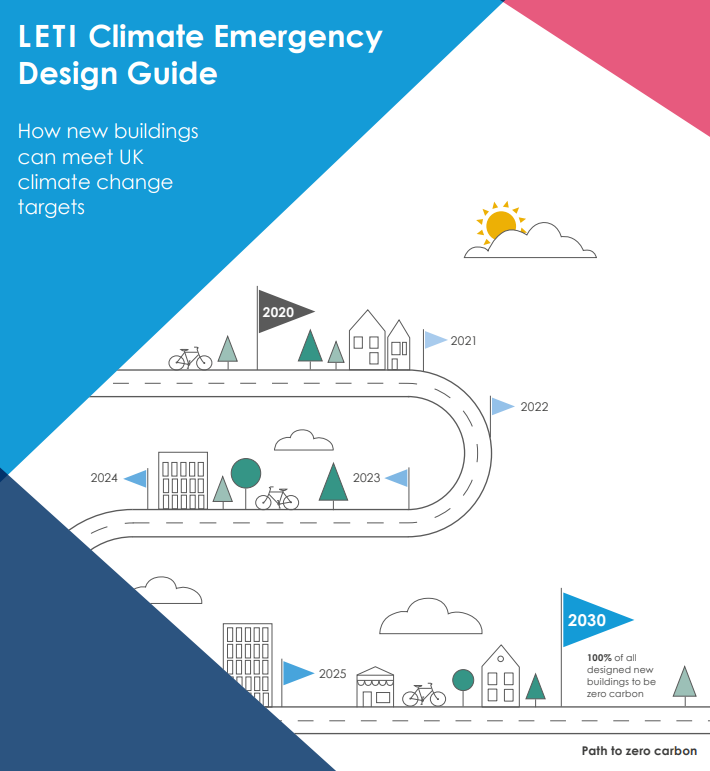This guide outlines the requirements of new buildings to ensure our climate change targets are met – setting out a definitive journey, beyond climate emergency declarations, into a Net Zero carbon future. It is specifically aimed towards developers/landowners, designers, policy makers, and the supply chain, and it helps to set clear and achievable targets.
We are in a climate emergency, and urgently need to reduce carbon emissions. This guide outlines the requirements of new buildings to ensure our climate change targets are met – setting out a definitive journey, beyond climate emergency declarations, into a Net Zero carbon future. It is specifically aimed towards developers/landowners, designers, policy makers, and the supply chain. It aims to help to define ‘good’ and to set clear and achievable targets.

The Climate Emergency Design Guide covers five key areas:
- Operational energy
- Embodied carbon
- The future of heat
- Demand response
- Data disclosure.
And its methodology includes setting the requirements of four key building archetypes (small-scale residential, medium/large-scale residential, commercial offices, and schools).
This guidance demonstrates that the building industry knows how we should be designing buildings. In 2020, buildings that adopt these requirements now will be seen as leaders. By 2025, these requirements must become standard design practice, otherwise the building industry will not meet our collective responsibility in this climate crisis.
LETI believes that in order to meet our climate change targets, in 2020, 10% of all new projects that developers and designers are involved in, should be designed to meet the requirements set out in this guide. Design teams will have the opportunity to register their projects as LETI Pioneer projects, to share knowledge and overcome barriers with other design teams working towards the same goal.
This report has clear recommendations on design and management processes and technologies, to ensure buildings can contribute to a zero-carbon future – both operational carbon released from use of the buildings as well as the carbon embodied in construction. A huge amount has been learned over the past twenty and more years on how to design, build, and operate zero-carbon buildings. So much of that learning in distilled in this report.
